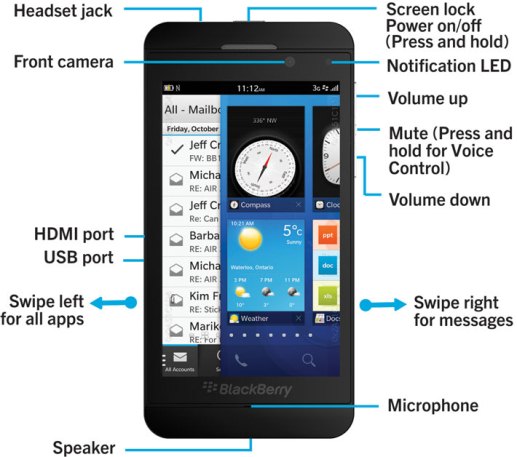The jury is still out on whether the BlackBerry Z10 will be able to reverse the company’s sagging fortunes. However, many critics of the handset recognize that although it is far from being revolutionary, BlackBerry made a bold move in breaking from its traditional comfort zone and introducing a new user interface for its latest smart phone.

Lindsay was plucked by Research in Motion co-founder Mike Lazaridis from Microsoft Corp. where he was design director for Microsoft Live Labs. Before that, he worked for 10 years in design at Apple Inc. where he was design director for the Mac OS X user experience group.
He said Lazaridis recognized that the post-iPhone mobile users had a new set of expectations on how mobile devices should look and behave and the RIM executive wanted this reflected in the new BlackBerry product. Some of these ideas were put into work on the BlackBerry 6 and 7 operating systems but in was only with BlackBerry 10 that the company felt it found what it needed to achieve a wider appeal, Lindsay said.
RELATED CONTENT
Review of the BlackBerry Z10
Z10 breaks all previous BlackBerry launch sales
The process, he said was guided by three basic core principles:
-Be a true BlackBerry. The company had a slogan: “a tool not, not a toy.” The product had to be true to the BlackBerry DNA and embody the brand value associated with productivity, efficiency and empowering the user, Lindsay said.
-Purposeful design. Previous BlackBerry handsets were known for their ease of use even with one hand. Designers carried thus further on BlackBerry Z10 by combining one-handed and two-handed operations to provide better functionality. For example, he said, users can use one thumb to touch and view an email message and another thumb to hit another function such as delete.
-Cinematic experience. For the handset’s designers this meant a larger screen, Lindsay said. BlackBerry also gave app designers control on every pixel on the screen and refrained from reserving some of them for things like battery life or signal strength or a virtual control button. This provides a more immersive user experience and more room for gestures. The end result: simple and consistent gestures for navigating the phone and vast improvement in user experience.